The RLM system is probably the most widely known system of all paint systems in the 2nd world war, and a lot of modellers are known with it’s nomenclature. Still there is interesting information to be told about this system, and while other websites also do a very good job of accurately describing the colours with their matching modelling paints, they often lack the more rarely used colours, and wider context and history.
As with all pages of this type, the colours shown are an approximation. Monitors can change the colour displayed and don’t account for shading and glossiness.
In reality these colours would also fade over time, and different batches had slightly different tones.
The accuracy of the paints can be off. They’re mostly taken from the manufacturer, from painting manuals and bits on the internet. They should resemble the actual colour closely, but use at your own discretion.
Beginnings: The RAL
The RAL, Reichsausschuss für Lieferbedingungen, (State Committee for Delivery Conditions) was a German institute formed on April 23 1925, just after the first world war. While it was under supervision of the German Ministry of Economic Affairs, it was an legally independent entity. In the beginning it was tasked with quality assurance by labelling goods and services.
In 1927, the RAL published with it’s first colour standard for general industrial usage, RAL 840. By creating a system of standardized colours the cost of paints could be reduced due to economy of scale. By prioritizing local pigments, imports could be reduced as foreign currencies were scarce and the Reichs mark was worthless in foreign countries. The system contained 40 colours most widely used; 13 base shades and 27 more created by mixing those. During the following decade the amount of colours increased to more than 100 shades as new government organizations, such as the posts and railways, needed new shades. As a result the RAL 840 was split into multiple standards.
RAL 840 B
On the 1st of November 1927 the RAL 840B was published. This was and extendsion with a new range of 40 colours for vehicle usage.
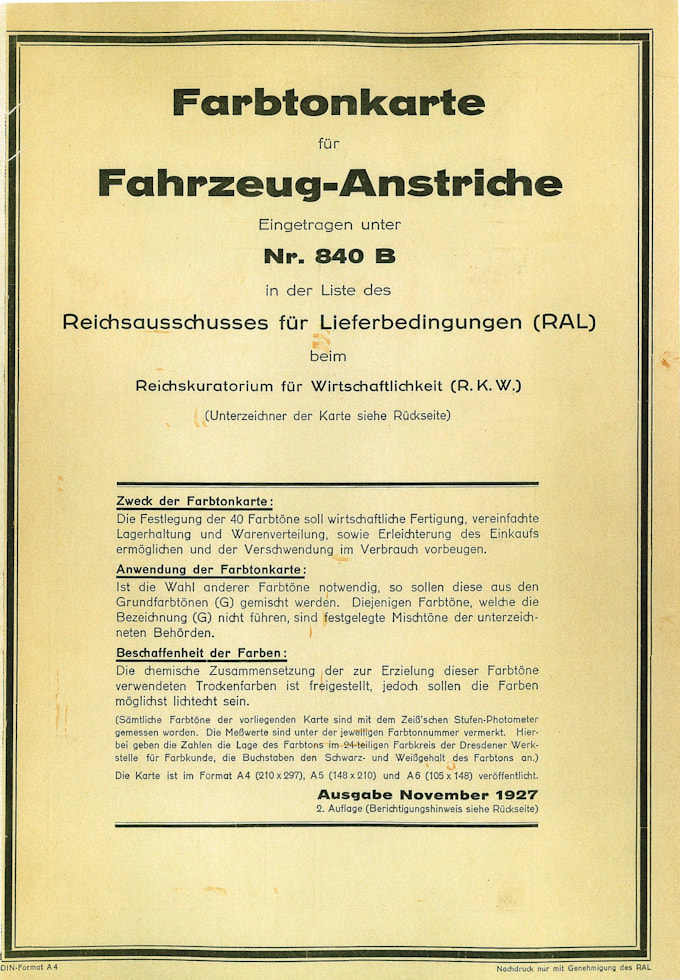
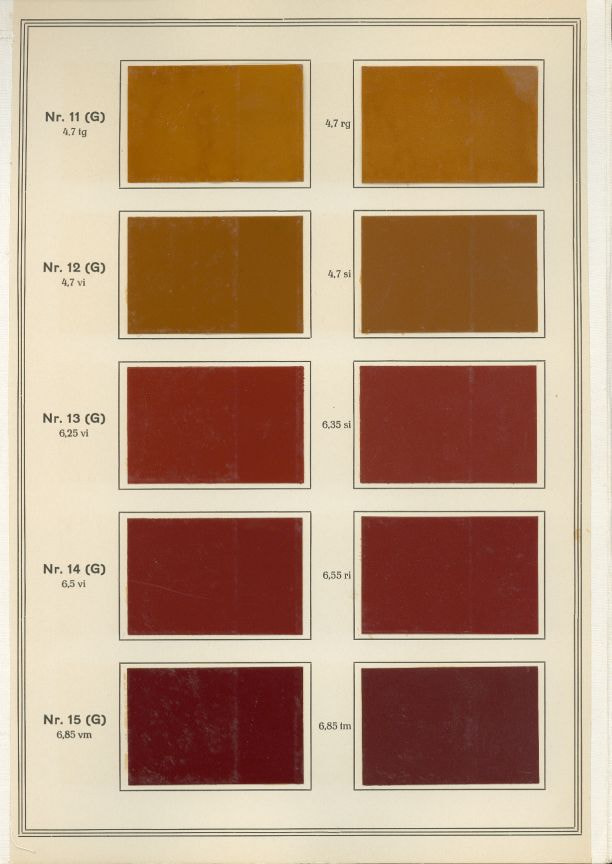
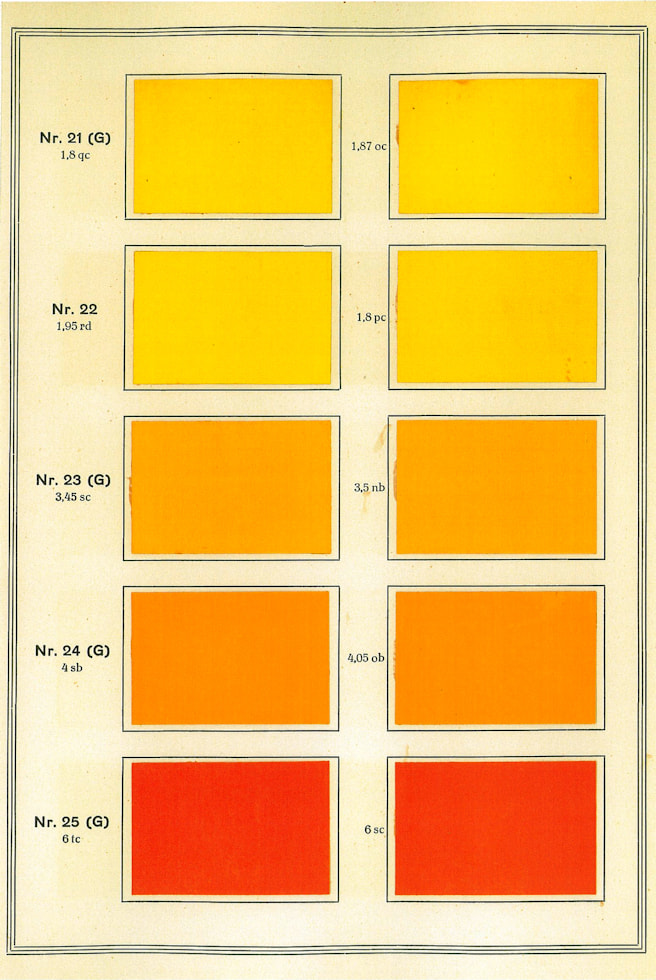
RAL 840 B2
On April 30 1932 an updated version of RAL 840 B was published, which was designated RAL 840 B2 in June to avoid confusion. Over time, these colours proved insufficient and new colours were added via supplementary sheets, or Ergänzungsblätter.
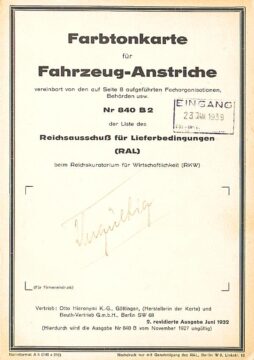
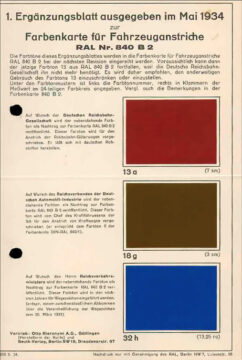
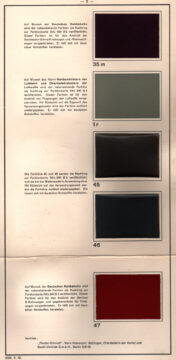
RAL 840 R
In 1939-1940 this wild growth of colours led to a new numbering system under influence of the Wehrmacht, The RAL 840 R (=Revision). Under this reworked system every colour was given a four number code and a name. The first digit indicated the main group or shade. Each group started with the ‘pure’ shade, and moved in small intervals to the next ‘pure’ shade in the following group. This system was applied widely within all arms of the German government and armed forces such as the police, army, navy. It remains in use to this date as RAL 840 HR. At least initially it was also used by the air force, although copied via it’s own system.
| RAL 1xxx | Yellow | RAL 6xxx | Green |
| RAL 2xxx | Orange | RAL 7xxx | Grey |
| RAL 3xxx | Red | RAL 8xxx | Brown |
| RAL 4xxx | Violet | RAL 9xxx | White and Black |
| RAL 5xxx | Blue |
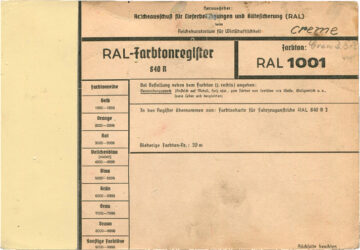
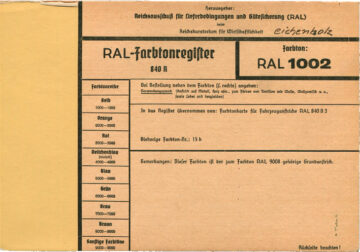
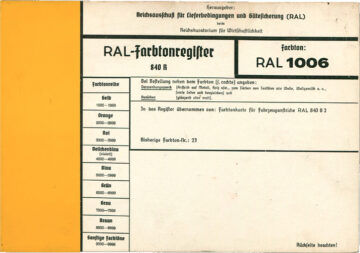
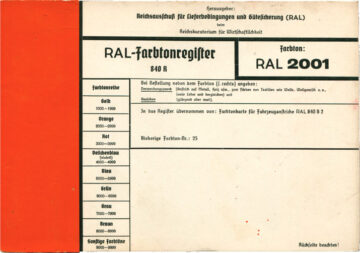
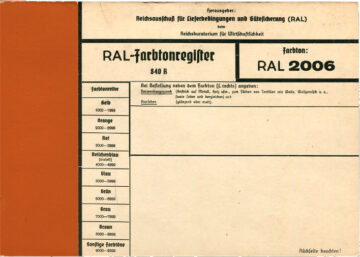


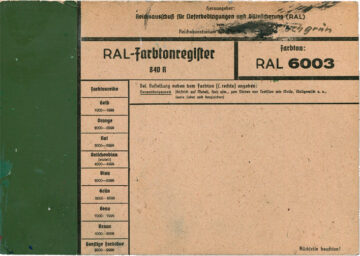
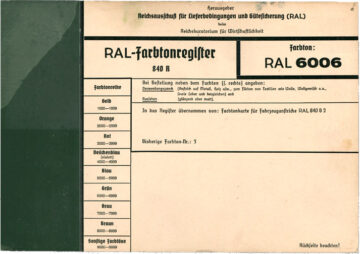

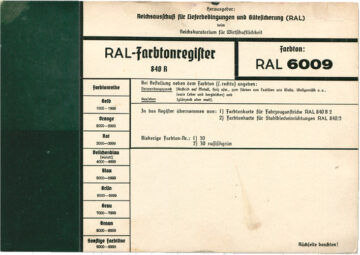

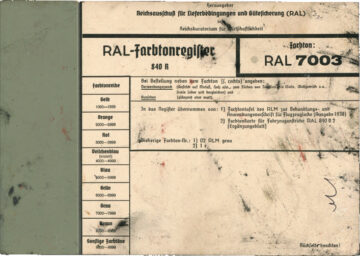
RLM 02
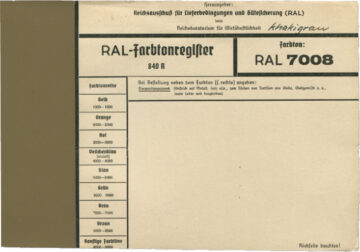


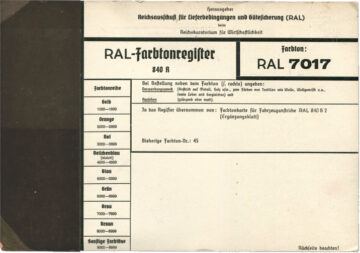
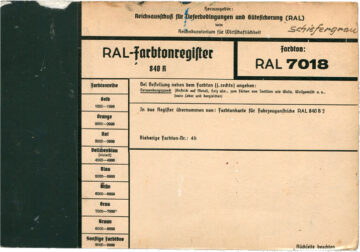
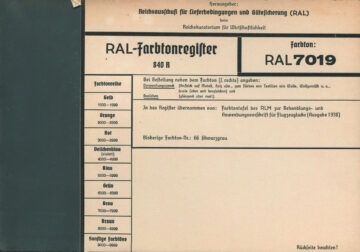
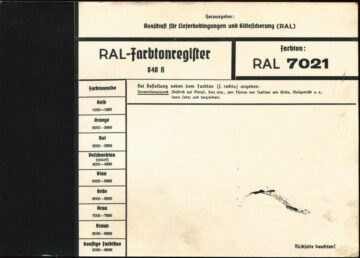
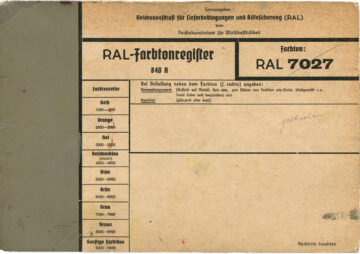
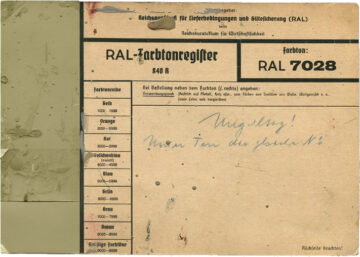

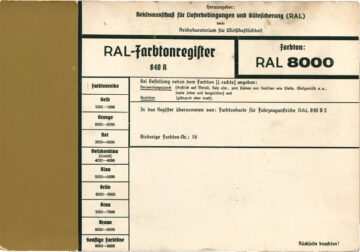
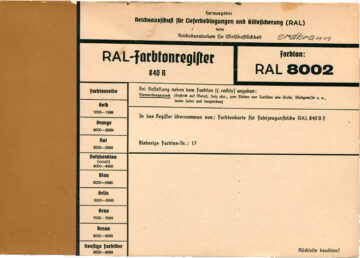
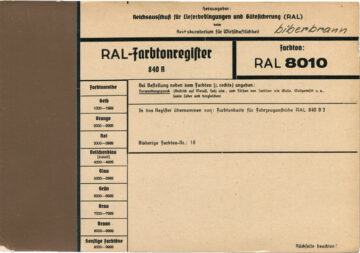
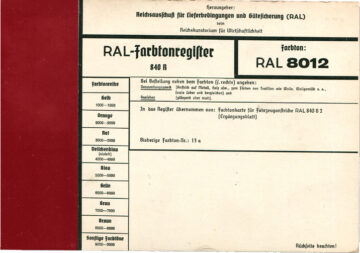
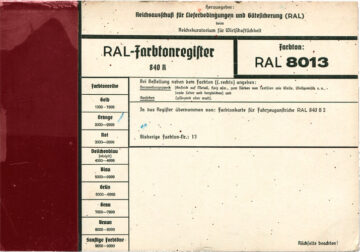

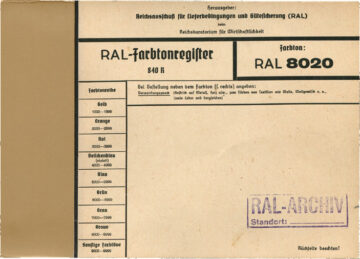
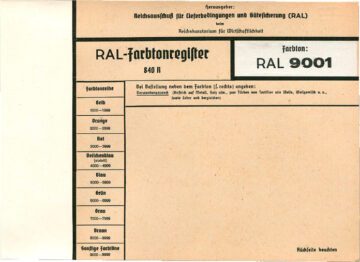
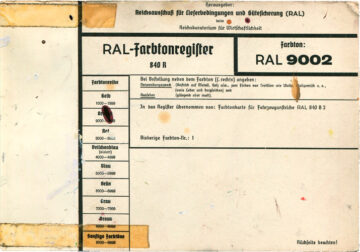
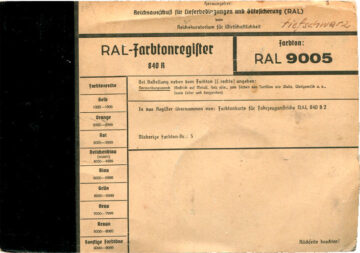
RLM
The RLM, abbreviation of Reichsluftfahrtministerium, was the German Ministry of Aviation. It was in charge of all matters concerning German aviation, such as aircraft development and standardization within the Luftwaffe, the German Air Force. The ministry was founded in 1933 and oversaw the standardization of, among other things, aircraft paints and camouflage patterns within the Luftwaffe.
When the RLM stopped using the RAL systems isn’t exactly known, but by March 1935, when the Luftwaffe was revealed, the RLM had already a system in place, largely similar to the RAL 840 R, however the system was already in use from at least February. Why the RLM choose to diverge from the RAL four digit to their own two digit codes is unknown, but it might be because the RAL was thought to be too unwieldy, or because a two digit code better fitted their Flugzeug Werkstoffen (Aircraft materials) number system, often shortened as Flw. number.
The Flw system
This was a new system by the RLM spanned the entire military procurement of materials and ranged from 0000 to 9999. These were sometimes subdivided with a decimal suffix to give additional information, such as material grade, treatment or colour. The first documentation of these occurred in 1935, in the ‘Fliegwerkstoffe.- Handbuch für die Auswahl der im deutschen Flugzeug-, Flugmotoren- und Luftfahrtgerätebau zu verwendenden Werkstoffe, Herausgegeben vom Reichsluftfahrtministerium Werkstoffabeteilung, 1935’ (Aeronautical materials.- Handbook for the selection of materials to be used in German aircraft, aircraft engines and aircraft equipment construction, Part I: Metallic materials, issued by the RLM material department, 1935).
| Range | subdivision | |
| 0000-3999 | .0-.9, material treatment | metals: steel, gun metal, brass, bronze, aluminium magnesium alloy, etc. |
| 5000-6000 | Various rubbers, leather, textiles, paper, etc. | |
| 7100-7199 | none initially, later .- or .00-.99 | Aircraft lacquer bases. At the end of the war only ~50 codes had been utilized. |
| 7200-7299 | N.A | Paint thinners |
| 7300-7499 | Colours of corrosion proofing of materials | |
| 7500-9999 | Lime, asbestos, ceramic materials and glass. |
The 7100-7199 range here only described the base lacquers. And while these often had a natural colour, this could vary from batch to batch. To identify the specific colour, a two digit code would be used as suffix. For example, 7102.02 would be the 7102 lacquer, which is almost translucent with a slight green tint mixed with the RLM 02 colouring pigments. .00, .- and .99 held special meanings: 00 meant a clear finish, showing the colour underneath. If no pigments were added to the lacquer the .- suffix was used. This was later replaced with .99 as early computers (Hollerith machines, or Tabulating machines) couldn’t handle the dash.
These two digit codes would become known as the well known RLM colours. It should be noted however that these first RLM colours were relabelled RAL 840 R colours.
100 numbers were allocated in blocks of 20 (21 for the last block) for the paints.
| Range | German name | Notes |
| 00-19 | Grundraben (Innen-Aussen-anstricht | Base colour (Internal-external base finish) |
| 20-39 | Kennzeichnungsfarben | Marking colours |
| 40-59 | Sonderfarben | Special colours |
| 60-79 | Tarnanstrichfarben | Camouflage colours |
| 80-100 | – | This block had no purpose allocated, but might have been intended as an overflow block, as it was used as such with new camouflage colours being placed in this range. |
3 February 1935: Warnecke und Böhm company letter
The first documented appearance of the new RLM system is in a company letter from the paint manufacturer Warnecke un Böhm from 3 February 1935. It includes a written list of colours, including multiple that don’t appear on later RLM publications, such as 07 saturnrot, 32 hellgelb en and silbergrau.
This would indicate that the system was already in place for at least some time, however any documentation about the incarnation of the system have been lost to date.
1936: Richtlinien für die Entwicklungen geeigneter Flugzeuglacke
In 1936 a document addressed to the German paint manufacturing industry was published titled “Richtlinien für die Entwicklungen geeigneter Flugzeuglacke” (Guidelines for the development of suitable aircraft paint). It was addressed to the German paint manufacturing industry, likely by the RLM (This isn’t actually known, but no other government branch would have vested interst in publishing such a document).
The original document hasn’t been found, only a reissue “2/1938”. The B. likely means a 1st part existed of this document. The main statement of the document was that all paints should use locally procured materials, as imports were difficult due to scarecity of foreign currency. It also stated that, if the RLM requested as such, manufacturers had to grant other companies licences and knowledge to start-up paint production.
1936: Luftwaffen Dienstvorschriften L.Dv. 521
The RLM regulations for colour shade, production and application were proclaimed by Luftwaffen Dienstvorschriften L.Dv. 521 (=air force regulations L.Dv. 521) starting early 1936. It was split in three parts:
- L.Dv. 521/1 Behandlungs- und Anwendungsvorschrift für Flugzeuglacke, Teil 1: Motorfleugzeuge.
Handling and application instructions for aircraft paints, Part 1: powered aircraft - L.Dv. 521/2 Behandlungs- und Anwendungsvorschrift für Flugzeuglacke, Teil 2: Segelflugzeuge.
Handling and application instructions for aircraft paints, Part 2: gliders - L.Dv. 521/3 Einer Vorschrift zum ausbessern von Fleugzeuglackierungen
specification for touching up aircraft paintwork
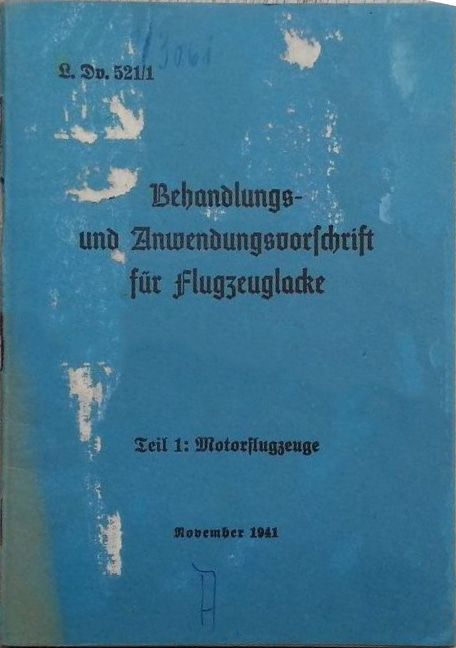
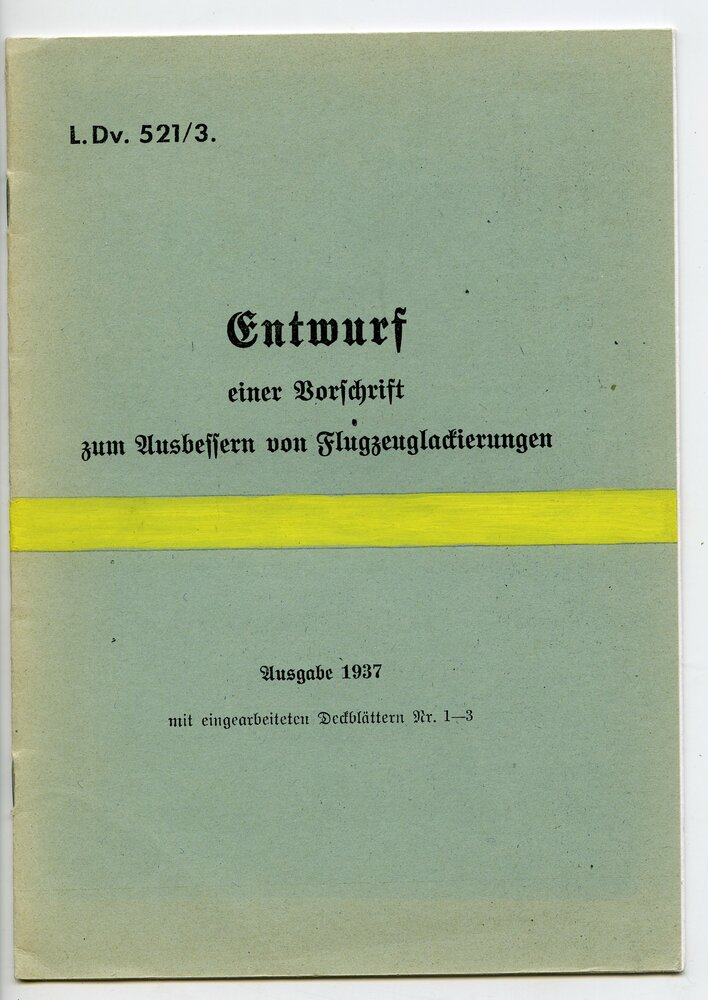
The earliest known surviving version, a revision of L.Dv. 521/1, was issued in march 1938. Some colours, including the RLM 61, 62 and 63, were still correlated to the RAL 840 R system. (RAL 8019, 6002 and 7004 respectively.)
In November 1941 the L.Dv. 521/1 was revisited, although it was still marked as Ausgabe 1938 (= edition 1938). The L.Dv. 521/1 (1941) contained three new colours: RLM 74,75 and 76. RLM 61, 62 and 63 were no longer used for aircraft and done away with. Strangely RLM 02 and RLM 66 were changed. RLM 66 was changed from RAL 7019 to RAL 7021. RLM 02 was made more intense and darker.
RLM 78 and 79 were not ready at the time of printing and were attached last-minute by loose paint chips stuck to a blank page in the manual.
Full Colour Table
RLM 00-19, Grundfarben
The purpose of this block is to denote primer colours, however during the war most colours were used as regular camouflage as well. Of this block only five numbers appear on RLM colour charts, RLM 00, 01, 02, 04 and 11. Two more appear somewhere on official documents; RLM 03 and 07. Their exact purpose remains unknown however. RLM 05 doen’t appear on official charts either, but was widelely used for non-military purposes. RLM 06, 08, 09 and 10 seem to have been assigned at some point, but no documentation has been found.
| RLM number | Colour | equivalents | Gunze | Tamiya | Vallejo | Hataka | MRP | AK | Ammo MIG |
| RLM 00 Wasserhell |
transparant | RAL-9000 | X-35 | 71.058 | |||||
| Clear gloss protection coating Primer |
|||||||||
| RLM 01 Silber |
Silver | RAL-9006 FS-17178 |
|||||||
| Undercarriage The first aircraft of the Luftwaffe were in this color |
|||||||||
| RLM 02 RLM-Grau |
Grey-green | RAL-7003 FS-34159 |
H070 C060 |
33%XF-2 33%XF-49 33%XF-22 |
71044 | HTK-*023 | MRP-050 | AK11811 AK11812 RC265 / RC932 RC266 / RC933 RC |
217 |
| Extensively used as cockpit colour before 1943. Interior colour; wheel wells, engine compartment, ect. Overall colour of prototype, trainer and liaison aircraft Early camouflage upper side Sometimes used as a replacement for RLM 76 in the late war night fighter camouflage scheme |
|||||||||
| RLM 03 Silbergrau |
Silver | ||||||||
| mostly used before the war and discarded early on as it doesn’t appear on any colour charts. | |||||||||
| RLM 04 Gelb |
Yellow | RAL-1004 FS-37200 |
H413 C113 |
XF-03 | 71078 | HTK-*066 | MRP-051 | AK11813 RC267 / RC934 |
|
| ID markings, bands, underside of the wingtips and cowlings underside of captured aircraft. |
|||||||||
| RLM 05 Elfenbein |
Ivory | FS-13618 RAL 1001 |
71106 70806 |
RC046 | |||||
| overall colour of some experimental gliders and experimental aircraft. It doesn’t appear on colour charts after 1936, but remained in use as colour for paramilitary gliders of the NSKF (Nationalsozialistisches Fliegerkorps) until 1945. Even L.Dv. 521/2 doesn’t contain this colour, as the specification only handles markings and registration codes. | |||||||||
| RLM 07 Saturnrot |
Bright orange | ||||||||
| Referenced in a document from 3 February 1935 , however it’s purpose remains unknown and it never appeared on official colour charts. A colour matching the description has been found on the lower internal metal structure of the Australian War memorial Me 163 B. It’s however unknown if this is actually RLM 07. (Merrick, 2005) |
|||||||||
| RLM 11 Grau |
|||||||||
| Appears on the first 1936 colour chart, but scrapped afterwards. It’s purpose and exact shade remain unknown. | |||||||||
RLM 20-39, Kennzechnungsfarben
These colours were used for markings, both identification markings on the fuselage (roundels, numbers, warning labels, etc.), as well as colours for internal systems such as electrical and oxygen systems.
| RLM number | Colour | equivalents | Gunze | Tamiya | Vallejo | Hataka | MRP | AK | Ammo MIG |
| RLM 21 Weiß |
White | RAL-9001 | MRP-004 | ||||||
| markings, fuselage bands, numbers. winter camouflage, by applying the paint dissolved in patrol on the plane, easily worn |
|||||||||
| RLM 22 Schwarz |
Black | RAL-9004 | MRP-005 | ||||||
| markings and fuselage codes 7120.22: removable night camouflage. Applied on the underside of aircraft over RLM 65. May be applied in the field, or by the manufacturer. Must be removed after 8 days. 7124.22: permanent night camouflage. |
|||||||||
| RLM 23 Rot |
Red | RAL-3001 | H414 C114 |
XF-07 | 71102 | HTK-103 | MRP-052 | ||
| Identification markings | |||||||||
| RLM 24 Dunkelblau |
Dark blue | RAL-5000 | H015 | 71266 | HTK-*102 | MRP-053 | RC010 | ||
| Identification markings Oxygen systems. Compressed air systems. |
|||||||||
| RLM 25 Hellgrün |
Light green | RAL-6000 | H094 | 71267 | HTK-*270 | MRP-054 | |||
| Identification markings Water and glycol motor cooling systems. |
|||||||||
| RLM 26 Braun |
Brown | RAL-8004 | 71105 | ||||||
| Lubrication systems and hydraulics. General usage |
|||||||||
| RLM 27 Gelb |
Yellow | RAL-1003 | |||||||
| Usage is same as RLM 04, but a different recipe and used less. Slightly different colour, but often not differentiated. Officially used for lacquering of internal wooden parts. Fuel systems/ |
|||||||||
| RLM 28 Weinrot |
RAL-3008 | ||||||||
| stepping zone area’s on the wings Identification markings |
|||||||||
RLM 40-59, Sonderfarben
Translating to “special colours”, this block is the least filled. There isn’t much known about these colours, and as far as we know they were scrapped before the publication of the L.Dv. 521 in 1938.
| RLM number | Colour | equivalents | Gunze | Tamiya | Vallejo | Hataka | MRP | AK | Ammo MIG |
| RLM 41 Grau |
Grey | ||||||||
| Interior and instrument panels of some very early planes, however seldom used scrapped before the first publication of L.Dv. 521 |
|||||||||
| RLM 42 Grau |
Grey | 71123 | |||||||
| scrapped before the first publication of L.Dv. 521 | |||||||||
RLM 60-79, Tarnanstrichfarben
Camouflage colours, these colours were used as external finishes on aircraft.
RLM 64 is curiously missing from the list. It hasn’t been found in any official documentation, but it is sometimes depicted by secondary sources as a olive green or light blue. Some theories about it being an export colour on Turkish He-111’s exists as well. However these are all unsourced speculation, an thus I opted to not include RLM 64 in the table.
| RLM number | Colour | equivalents | Gunze | Tamiya | Vallejo | Hataka | MRP | AK | Ammo MIG |
| RLM 61 | Dunkelbraun | RAL-8019 | *168 | MRP-055 | AK11814 RC268 |
||||
| Pre war camouflage scheme, spanish civil war with RLM 62 and RLM 63 | |||||||||
| RLM 62 | Grün | RAL-6002 | 71.114 | *169 | MRP-056 | AK11815 RC269 |
|||
| Pre war camouflage scheme, spanish civil war with RLM 61 and RLM 63 | |||||||||
| RLM 63 | Hellgrau | RAL-7004 | 71.260 | *167 | MRP-057 | AK11816 RC270 |
266 | ||
| Pre war camouflage scheme, spanish civil war with RLM 61 and RLM 62 | |||||||||
| RLM 65 | Hellblau | H-067 C-115 N-067 S-115 |
XF-23 | 71.255 | *029 | MRP-058 | AK11817 AK11818 RC271 / RC935 RC272 / RC936 |
231 | |
| general undersurface for all aircraft, after 1941 no longer for fighters | |||||||||
| RLM 66 (1937) |
Schwarzgrau | RAL 7019 | H-416 C-116 |
71.055 | *040 | MRP-059 | AK11819 RC339 / RC937 |
218 | |
| Some use in identification markings. Instrument panel colour from 1938 onward, together with a RLM 02 finish of other internal surfaces. |
|||||||||
| RLM 66 (1941) |
Schwarzgrau | RAL 7019 | H-416 C-116 |
71.055 | *040 | MRP-059 | AK11820 RC273 / RC938 |
218 | |
| Interior colour from 1941 onward, but only area’s visible from the outside, other area’s stayed RLM 02 Some use in identification markings. Had a more lighter and greener touch before it was changed in the 1941 revision of the L.Dv. 521/1. It is unknown why the colour was changed, but if might have to do with it use as cockpit colour. |
|||||||||
| RLM 68 | Schwarzgrün | ||||||||
| RLM 69 | Dunkelgrün | ||||||||
| RLM 70 | Schwartzgrün | H-065 C-018 |
90%XF-11 10%XF-1 |
*015 | MPR-060 | AK11821 RC274 / RC939 |
232 | ||
| bomber camouflage, early fighters propeller blades |
|||||||||
| RLM 71 | Dunkelgrün | H-064 C-017 |
70%XF-11 25%XF-60 5%XF-10 |
71015 | *017 | MRP-061 | AK11822 RC275 / RC940 |
233 | |
| bomber camouflage until august 1944 | |||||||||
| RLM 72 | Grün | 71263 | *311 | MRP-062 | AK11823 RC276 |
||||
| post november 1941 splinter scheme for naval aircraft (reconnaissance, torpedo bombers, float planes) | |||||||||
| RLM 73 | Grün | 71256 | *312 | MRP-063 | AK11824 RC277 |
||||
| post november 1941 splinter scheme for naval aircraft (reconnaissance, torpedo bombers, float planes) | |||||||||
| RLM 74 | Graugrün | H-068 C-036 N-068 |
71258 | *313 | MRP-064 | AK11825 RC278 / RC941 |
253 | ||
| Top camouflage on fighter airfcraft from nov 1941 to august 1944 | |||||||||
| RLM 75 | Mittelgrau | H-069 C-037 |
70%XF-2 25%XF-24 5%XF-27 |
71259 | *007 | MRP-065 | AK11826 RC279 / RC942 |
254 | |
| Top camouflage on fighter airfcraft from nov 1941 | |||||||||
| RLM 76 (version 1) |
Lichtblau | MRP-181 | AK11827 RC320 / RC943 |
||||||
| Bottom side on fighter aircraft from nov 1941 night fighter topside overall colour of some high altitude fighters Due to shortages towards the end of the war, wide variations in this colour started to appear towards the end of the war |
|||||||||
| RLM 76 (version 2) |
Blaugrün | 71257 | *038 | MRP-066 | AK11828 RC321 / RC944 |
||||
| RLM 76 (late) |
Grünblau | 71103 | MRP-182 | AK11829 RC322 / RC945 |
256 | ||||
| No official recipe has been found, but this shade of RLM 76 is encountered on a number of surviving airframes. Sometimes faultily designated RLM 84. |
|||||||||
| RLM 77 | Hellgrau | *264 | |||||||
| Identification markings (Balkenkreuz, ID codes) on dark backgrounds such as RLM 22 on night bombers No official swatch or recipe has been found as of yet, colour derived from field samples |
|||||||||
| RLM 78 (1941) |
Himmelblau | *029 | AK11830 RC280 |
||||||
| Underside of the tropical scheme (1941) | |||||||||
| RLM 78 (1942) |
Himmelblau | H418 C118 |
XF-23 | 71101 | *314 | MRP-067 | AK11832 RC281 / RC946 |
247 | |
| Underside of the tropical scheme (1942-1944) | |||||||||
| RLM 79 (1941) |
Sandgelb | *014 | AK11832 RC282 |
||||||
| basis upper surface colour in the Mediterranean scheme (1941-1942) | |||||||||
| RLM 79 (1942) |
Sandgelb | H066, N066, C119 |
71278 | *172 | MRP-068 | AK11833 RC283 / RC947 |
222 | ||
| basis upper surface colour in the Mediterranean scheme (1942-1944) | |||||||||
RLM 80-100, unnamed block
This block doesn’t have an official name and was likely meant as an overflow block. As in practice, this was used as such after the camouflage colour block was filled. The other blocks didn’t have enough colours assigned to completely fill them.
Some secondary sources extend this list with RLM 84 and beyond, but no official documentation of these paints existing have been found.
| RLM number | Colour | equivalents | Gunze | Tamiya | Vallejo | Hataka | MRP | AK | Ammo MIG |
| RLM 80 | Olivgrün | H420 C120 |
XF-26 | 71265 | *053 | MRP-069 | AK11834 RC284 / RC948 |
284 | |
| optional upper surface details (lines, blotches) of the Mediterranean scheme (1941-1944) | |||||||||
| RLM 81 Ausf. 1 |
Braunviolett | XF-51 | 71264 | *008 | MRP-070 | AK11835 RC323 |
|||
| Officially known as 7121.81 | |||||||||
| RLM 81 Ausf. 2 |
Braunviolett | H421 C121 |
XF-74 | 71011 | *022 | AK11836 RC324 / RC949 |
|||
| Officially known as 7121.81 A 2 | |||||||||
| RLM 81 Ausf. 3 |
Braunviolett | AK11837 RC325 / RC950 |
255 | ||||||
| Officially known as 7121.A.3.81 | |||||||||
| RLM 82 | Hellgrün | H422 C122 |
71022 | *020 | MRP-071 | AK11838 RC326 / RC951 |
230 | ||
| Simular to RLM 81, multiple recipes exists for RLM 82. These however have no visual differences. | |||||||||
| RLM 83 | dunkelblau | H328 | 71266 | HTK-*274 | AK11839 RC327 |
||||
| Experimental colour for usage in the Mediterranean theatre. It was to be used with RLM 72 for seaplanes and RLM 70 for land based aircraft. Widespread usage is debated, but there are accounts of Junkers Ju 88 bombers being painted in a dark blue camouflage. The colour first appears in a monthly rapport, E-stelle Travermünde, in November 1943. It’s official recipe, Flieglack 7121.83, also gives a dark blue colour when recreated. It was experimented with, but no information about widespread usage exist and documentation regarding official implementation is still missing, however eye witnesses indicate that blue painted aircraft did fly around at from 1943 onward. For more information, see The Curious Case of RML 83 |
|||||||||
RLM 99, or Flw. xxxx.-
In official documentation the colour 99 sometimes appears. Being out of sequence, this colour was used to designate that the precise shade is unimportant. In practice, this often meant that no colouring pigments were added to the base lacquer, or a small amount of to aid with applying an even coat. Initially a dash was used (eg. 7101.-). This dash however wasn’t compatible with tabulating machines, early computers used for summarizing information on punch cards. Therefore it was replaced with RLM 99 (e.g. 7101.99). When a small amount of pigments were added, this could be noted after the Flw. number, eg 7140.99 gelb lasierend (transparent yellow).
pre 1936 Early Monotone camouflages
Initially German aircraft wore overall silver and grey finishes. These were standardized in 1936 with the L.Dv. 521. RLM 02 and RLM 63 differed visually little from each other. Trainers also used the silver livery as the colour provided better visibility in the air.
| Designation | Colour | equivalents | Gunze | Tamiya | Vallejo | Hataka | MRP | AK | MIG |
| DKH L40/52 hellgrau |
hellgrau | RC285 | |||||||
| DKH L40/52 was a line of paints developed for Lufthansa, sometimes the light grey shade was used on early military aircraft. | |||||||||
| RLM 01 | Silber | RAL-9000 | X-35 | 71.058 | |||||
| Overall colour of early aircraft Overall colour of trainer aircraft up to early 1940’s, after which it was phased out for a grey overall camouflage |
|||||||||
| RLM 02 (1938) |
RLM-Grau | RAL-7003 FS-34159 |
H070 C060 |
71.044 | *023 | ||||
| Overall colour of early aircraft | |||||||||
| RLM 63 | Hellgrau | RAL 7004 | 71.260 | *167 | |||||
| Overall colour of early aircraft | |||||||||
1936-1938 Early three colour splinter scheme
The introduction of standardized colours in 1936 also saw the introduction of the first camouflage pattern, intended for land based bombers. It was comprised of RLM 61,62 and 63 in a three tone splinter scheme over a RLM 65 underside. The scheme was first used on the new Junkers Ju 86 bombers, and the Dornier Do 17 bombers soon afterwards. The scheme was used officially until mid 1936 for dive bombers, and September 1938 for other aircraft, although application on reconnaissance aircraft remain unclear. The camouflage is most famously used on Dornier Do 17 and Henschel Hs 123 aircraft during the Spanish civil war, but was used well into the Polish and French campaigns.
| RLM | Colour | equivalents | Gunze | Tamiya | Vallejo | Hataka | MRP | AK | Ammo MIG |
| RLM 61 | dunkelbraun | RAL-8019 | X-9 | 70822 | HTK-*168 | MRP-055 | AK11814 RC268 |
||
| top side splinter scheme | |||||||||
| RLM 62 | grün | RAL-6002 | XF-65 | 71114 | HTK-*169 | MRP-056 | AK11815 RC269 |
||
| top side splinter scheme | |||||||||
| RLM 63 | hellgrau | RAL-7004 | XF-25 | 71260 | HTK-*167 | MRP-057 | AK11816 RC270 |
266 | |
| top side splinter scheme, faded to a more grey colour | |||||||||
| RLM 65 (1938) |
hellblau | H067, C115, N067, S115 |
XF-23 | 71255 | HTK-*029 | MRP-058 | AK11817 RC271 |
||
| underside | |||||||||
1937-1944 Early two tone green splinter scheme
In February 1937 a new camouflage was introduced with the introduction of the Messerschmitt Bf 109B. It consisted of two green tints in a splinter pattern with a blue underside, the same as the earlier style. While the border may appear as a hard edge, they blended into each other with a 5 cm overlay.
The pattern became standard on all new fighters, heavy fighters, bombers, low to medium altitude reconnaissance and ground attack aircraft.
| RLM | Colour | equivalents | Gunze | Tamiya | Vallejo | Hataka | MRP | AK | Ammo MIG |
| RLM 70 | Schwarzgrün | AK11821 RC274 |
|||||||
| top side splinter scheme | |||||||||
| RLM 71 | dunkelgrün | AK11822 RC275 |
|||||||
| top side splinter scheme | |||||||||
| RLM 65 (1938) |
hellblau | AK11817 RC271 |
|||||||
| underside | |||||||||
1938-1944 Maritime scheme
In november 1938 a new scheme was introduced for naval aircraft, with the issuing of the L. Dv. 521/1. It was very simular to the RLM 70/71 pattern, with the underside also RLM 65 for day operations and RLM 22 black for night fighters.
This scheme was found on naval reconnaissance aircraft such as the Do 24, Fw 200, Ju 290 and Bv 138, seaplanes such as the Ar 196 and He 115 and torpedo bombers such as some variants of the He 111 and Ju 88.
| RLM | Colour | equivalents | Gunze | Tamiya | Vallejo | Hataka | MRP | AK | Ammo MIG |
| RLM 22 | Schwarz | AK11817 RC271 |
|||||||
| underside for night | |||||||||
| RLM 72 | Schwarzgrün | AK11821 RC274 |
|||||||
| top side splinter scheme | |||||||||
| RLM 73 | dunkelgrün | AK11822 RC275 |
|||||||
| top side splinter scheme | |||||||||
| RLM 65 (1938) |
hellblau | AK11817 RC271 |
|||||||
| underside | |||||||||
1940-1945 Night camouflage
Fighters
In the beginnin, night fighters would use regular camouflage schemes, as this would allow them to be used as day fighters if neccessary. When the dangers of the RAF bombing raids became apparent in June 1940, a dedicated night fighter scheme was adopted. This scheme was overall RLM 22 black and was in use untill 1942, when it was replaced with RLM 74/75/76, with RLM 76 occasionally being replaced by RLM 02.
In early 1944 the night fighter scheme was simplified to RLM 75 over 76, with mottles or streaks of 76 on the upper surface. The lower starboard wing was to be painted in RLM 22, this however wasn’t always followed with a number of He 219’s being painted fully black on the bottom and on the sides.
Bombers
Bombers used in night operation were in July 1940 ordered to apply a black camouflage on their lower surfaces.
| RLM | Colour | equivalents | Gunze | Tamiya | Vallejo | Hataka | MRP | AK | Ammo MIG |
| RLM 22 | Schwarz | AK11817 RC271 |
|||||||
| underside for night | |||||||||
| RLM 74 | Graugrün | H-068 C-036 N-068 |
71258 | *313 | MRP-064 | AK11825 RC278 |
253 | ||
| Top camouflage on fighter airfcraft from nov 1941 | |||||||||
| RLM 75 | Mittelgrau | H-069 C-037 |
70%XF-2 25%XF-24 5%XF-27 |
71259 | *007 | MRP-065 | AK11826 RC279 |
254 | |
| Top camouflage on fighter airfcraft from nov 1941 | |||||||||
| RLM 76 (version 2) |
Blaugrün | 71257 | *038 | MRP-066 | AK11828 RC321 |
||||
1944-1945 Late war splinter Scheme
In August of 1943, a notice was sent out announcing the future introduction of RLM 81 and 82, which were to replace RLM 70 and 71. This was made official by a Sammelmitteling in July 1944, around the time losses on the ground started to exeed losses in the air. Existing stock of RLM 70 and 71 were to be used up and replaced by RLM 81 and 82. If necessary, RLM 70 was to be mixed with 82, and RLM 71 with 81 (further increasing the amount of late war green shades). A month later, RLM 65 was to be replaced by RLM 76.
A likely reason for this change was that RLM 70 and 71 contained chromium and RLM 65 contained Cobalt, bot necessary for the production of high-grade metals.
RLM 81 / RLM 82 over RLM 76
| RLM | Colour | equivalents | Gunze | Tamiya | Vallejo | Hataka | MRP | AK | Ammo MIG |
| RLM 76 (version 1) |
Lichtblau | MRP-181 | AK11827 RC320 |
||||||
| RLM 76 (version 2) |
Blaugrün | H417 | 71257 | HTK-*038 | MRP-066 | AK11828 RC321 |
|||
| RLM 76 (late) |
Grünblau | H074 | 71103 | HTK-*239 | MRP-182 | AK11829 RC322 |
|||
| No official recipe has been found, but this shade of RLM 76 is encountered on a number of surviving airframes. This shade has sometimes errorously been designated as RLM 84 |
|||||||||
| RLM 81 variant 1 |
Braunviolett Olivbraun |
H421 C121 |
XF-51 | 71264 | HTK-*008 | MRP-070 | AK11835 RC323 |
||
| RLM 81 variant 2 |
Braunviolett Olivbraun |
XF-74 | 71011 | HTK-*022 | AK11836 RC324 |
||||
| RLM 81 variant 3 |
Braunviolett Olivbraun |
H423 | 71287 | AK11837 RC325 |
255 | ||||
| RLM 82 | Hellgrün | H422 C122 |
71022 | HTK-*020 | MRP-071 | AK11838 RC326 |
230 | ||
1941-1944 Tropical Camouflage
Luftwaffe units started to be deployed in North Africa somewhere between late January and March 1941. At the time, no suitable camouflage colours for the sandy, Saharan desert were available. The first mention of the tropical scheme comes from an inspection document to a depot in Erling, Germany, which describes the three lacquers.
Curiously, only colour chips for RLM 78 and 79 were added to the L.DV. 521/1 of 1941. Somewhere after November 1941, RLM 78 was changed to a slightly lighter shade, while RLM 79 was changed to a darker, browner shade.
RLM 80 wasn’t always used, especially on later fighters such as Bf 109’s and Fw 190’s
Ever after the retreat from Africa, the colour scheme was still used to some extend in Italy until 1944 and the eastern front after units were send there.
| RLM | Colour | equivalents | Gunze | Tamiya | Vallejo | Hataka | MRP | AK | MIG |
| RLM 78 (1941) |
Himmelblau | *029 | AK11830 RC280 |
||||||
| Underside of the tropical scheme (1941) | |||||||||
| RLM 78 (1942) |
Himmelblau | H418 C118 |
XF-23 | 71.101 | *314 | MRP-067 | AK11832 RC281 |
247 | |
| Underside of the tropical scheme (1942-1944) | |||||||||
| RLM 79 (1941) |
Sandgelb | *014 | AK11832 RC282 |
||||||
| basis upper surface colour in the Mediterranean scheme (1941-1942) | |||||||||
| RLM 79 (1942) |
Sandgelb | H066, N066, C119 |
71.278 | *172 | MRP-068 | AK11833 RC283 |
222 | ||
| basis upper surface colour in the Mediterranean scheme (1942-1944) | |||||||||
| RLM 80 | Olivgrün | H420 C120 |
XF-26 | 71.265 | *053 | MRP-069 | AK11834 RC284 |
284 | |
| optional upper surface details (lines, blotches) of the Mediterranean scheme (1941-1944) | |||||||||
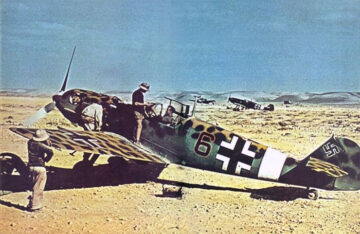
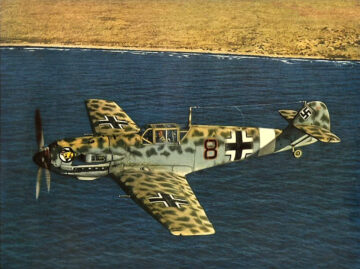
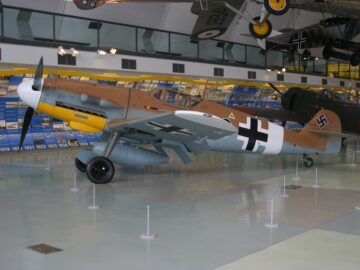
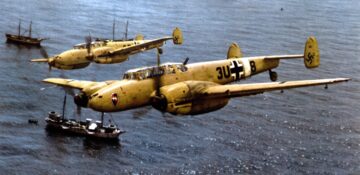
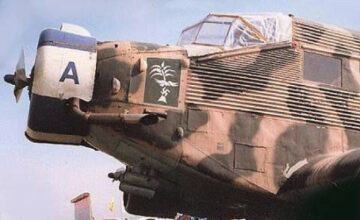
1935-1945 RLM 05 Elfenbein
RLM 05 was one of the earliest colours specified by the RLM, but was also scrapped before 1936 for military use. As such, it doesn’t appear on any contemporary colour charts. Even the L.Dv. 521/2, which specifies glider paints, doesn’t contain this colour, as the specification only handles markings and registration codes. The colour however remained in use until the end of the war on some experimental and research aircraft, and on gliders of the NSKF (Nationalsozialistisches Fliegerkorps, a German paramilitary organisation).
RLM 02 was used for cockpits. The switch to RLM 66 wasn’t made as the contrast when vieuwed from above was deemed to much.
| RLM number | Colour | equivalents | Gunze | Tamiya | Vallejo | Hataka | MRP | AK | Ammo MIG |
| RLM 05 | Elfenbein Gelb Lasur |
FS-13618 RAL 1001 |
71106 | RC046 |
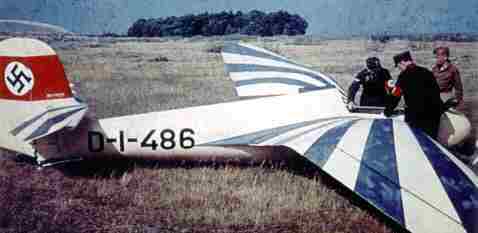
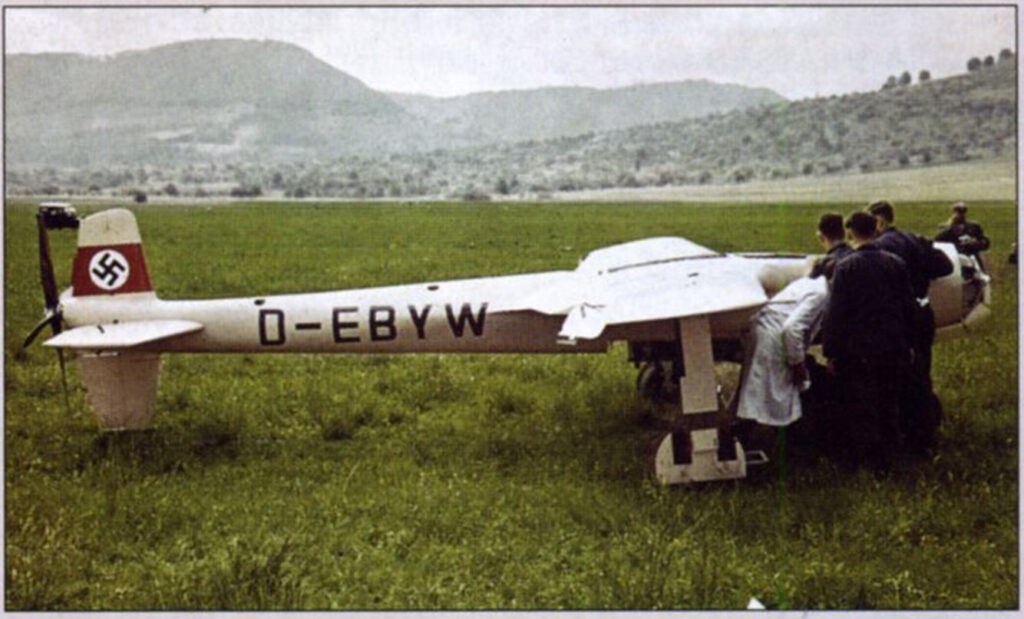
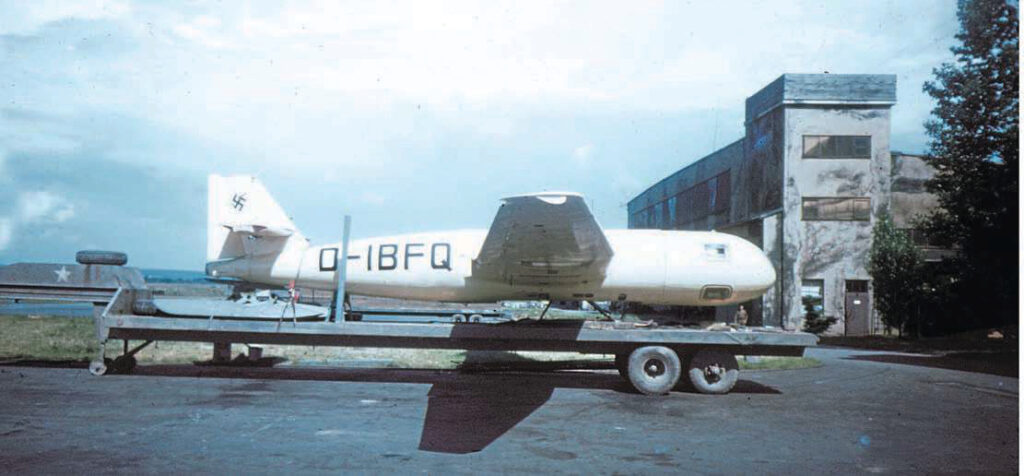
Unsure and wrong colours
These designations I’m not sure about, if they even exist. Especially the colours 64 and 67 are suspiously missing from the range, implying that they might exist, or at least have been considered to the point of getting an RLM number reserved. However as of yet no official documents about their existence have surfaced.
| RLM number | Colour | equivalents | Gunze | Tamiya | Vallejo | Hataka | MRP | AK | Ammo MIG |
| 9 | Gelbgrün | ||||||||
| RLM 64 | |||||||||
| sometimes depicted as a light blue colour, sometimes as an olive green, supposedly it was on colour charts before the 1936 revision of the L.Dv. 521, however no original evidence of it’s existence or usage has surfaced as of yet. export colour ? |
|||||||||
| RLM 67 | Weiß | ||||||||
| RLM 84 | |||||||||
| RLM designation is erroneous and this colour was most likely the late variant of RLM 76. | |||||||||
| 91 | |||||||||
Sources
- RAL History, https://www.ral.de/en/about-us/ral-history/
- https://www.cybermodeler.com/color/ral840r_table.shtml
- Goralczyk, H. W. M. T. (2019). Real Colors of WWII Aircraft. AK Interactive.
- M. Ullmann, Hornets’ Nest RLM 83 Dark Blue. http://www.clubhyper.com/reference/rlm83darkbluemu_1.htm
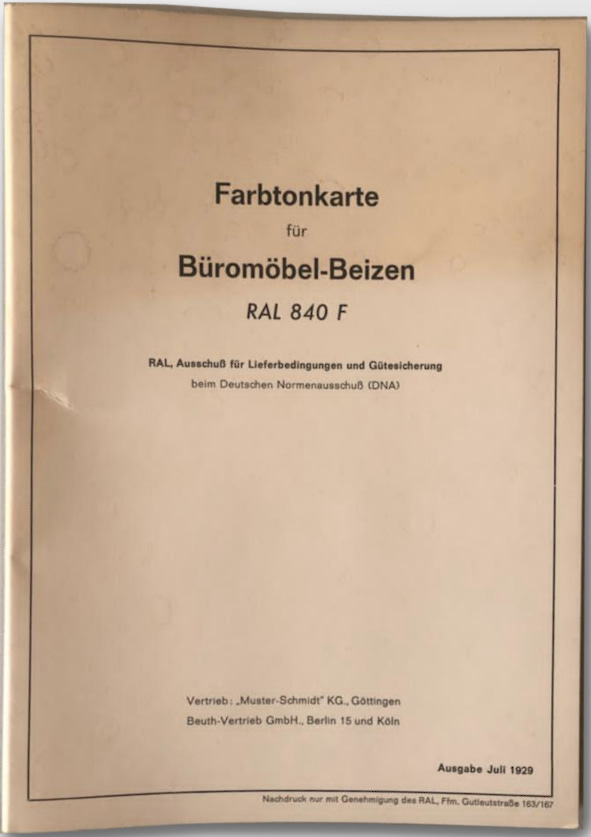
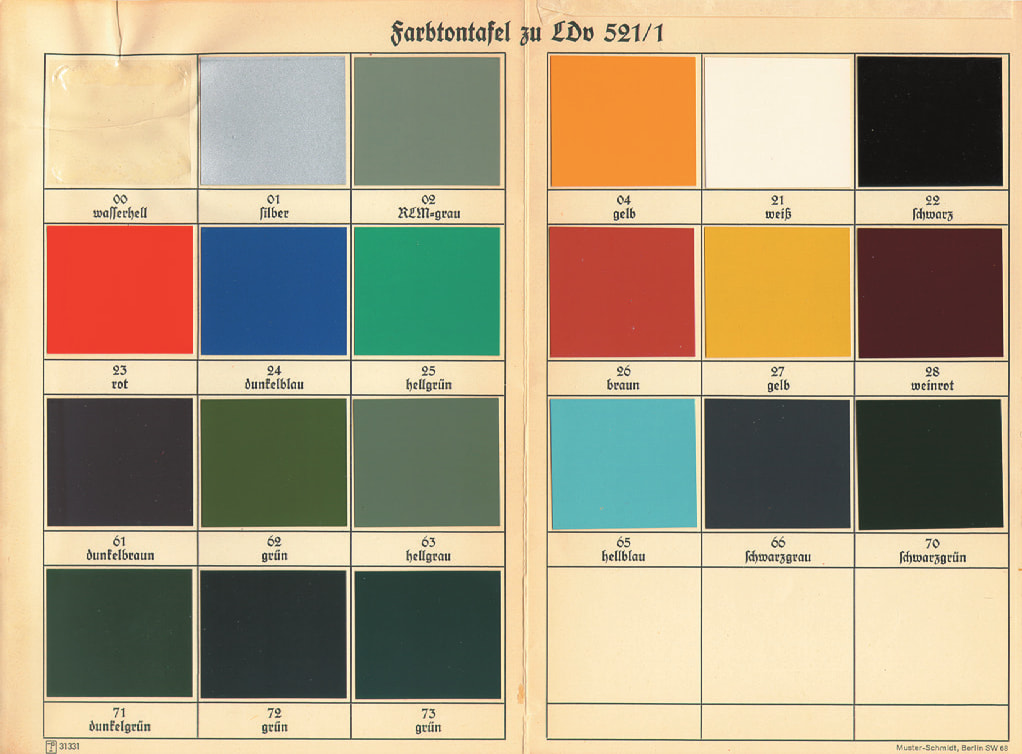
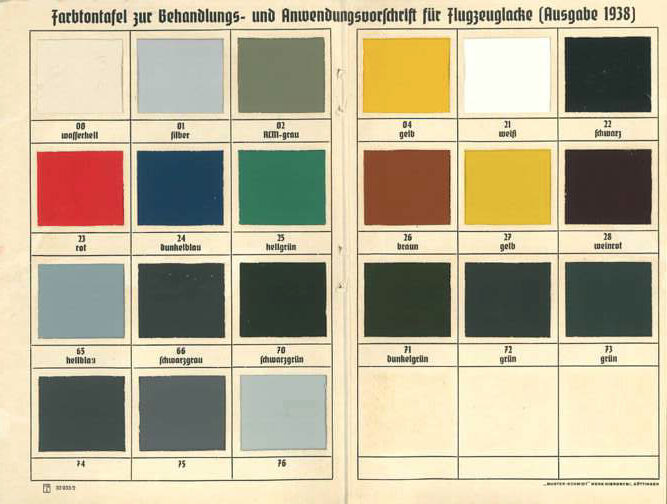
I have one of the 512/1 1941 books with color charts. How best to sell it?
I guess Ebay? I personally don’t have the money to buy it, however if you could make a scan I would greatly appreciate it!
Hi Mark, do you still have the book? I would be interested in buying it.
Nice info, really helpful. I noticed a small typo: in the “RLM 60-79, Tarnanstrichfarben” section RLM 70 should be ‘Schwarzgrün’.
Kind regards,
Axel
Great reference, thank you!